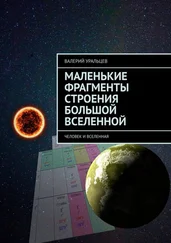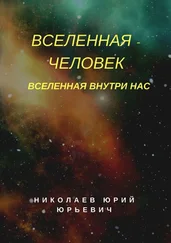17. Ibid.
18. Ibid.
19. Ibid.
20. Valerie V. Hunt, «Infinite Mind», Magical Blend, no. 25 (January 1990), p. 22.
21. Из личной беседы с автором 28 октября 1988.
22. Robert Temple, «David Bohm», New Scientist (November 11, 1982), p. 362.
23. Из личной беседы с автором 13 ноября 1988.
24. Из личной беседы с автором 18 октября 1988.
25. Из личной беседы с автором 13 ноября 1988.
26. Ibid.
27. Ibid.
28. George F. Dole, A View from Within (New York: Swedenborg Foundation, 1985), p. 26.
29. George F. Dole, «An Image of God in a Mirror», in Emanuel Swedenborg: A Continuing Vision, ed. Robin Larsen (New York: Swedenborg Foundation, 1988), p. 376.
30. Brennan, Hands, p. 26.
31. Из личной беседы с автором 13 сентября 1988.
32. Karagulla, Breakthrough, p. 39.
33. Ibid., p. 132.
34. D. Scott Rogo, «Shamanism, ESP, and the Paranormal», in Shamanism, ed. Shirley Nicholson (Wheaton, III.: Theosophical Publishing House, 1987), p. 135.
35. Michael Harner and Gary Doore, «The Ancient Wisdom in Shamanic Cultures», in Shamanism, ed. Shirley Nicholson (Wheaton, III.: Theosophical Publishing House, 1987), p. 10.
36. Michael Harner, The Way of the Shaman (New York: Harper & Row, 1980), p. 17.
37. Richard Gerber, Vibrational Medicine (Santa Fe, N. M.: Bear & Co., 1988), p. 115.
38. Ibid., p. 154.
39. William A. Tiller, «Consciousness, Radiation, and the Developing Sensory System», as quoted in The Psychic Frontiers of Medicine, ed. Bill Schul (New York: Ballantine Books, 1977), p. 95.
40. Ibid., p. 94.
41. Hiroshi Motoyama, Theories of the Chakras (Wheaton, III.: Theosophical Publishing House, 1981), p. 239.
42. Richard M. Restak, «Is Free Will a Fraud?» Science Digest (October 1983), p. 52.
43. Ibid.
44. Из личной беседы с автором 7 февраля 1990.
45. Из личной беседы с автором 13 ноября 1988.
1. See Stephan A. Schwartz, The Secret Vaults of Time (New York: Grosset & Dunlap, 1978); Stanislaw Poniatowski, «Parapsychological Probing of Prehistoric Cultures», in Psychic Archaeology, ed. J. Goodman (New York: G. P. Putnam & Sons, 1977); and Andrzey Borzmowski, «Experiments with Ossowiecki», International Journal of Parapsychology 7, no. 3 (1965), pp. 259–84.
2. J. Norman Emerson, «Intuitive Archaeology», Midden 5, no. 3 (1973).
3. J. Norman Emerson, «Intuitive Archaeology: A Psychic Approach», New Horizon 1, no. 3(1974), p. 14.
4. Jack Harrison Pollack, Croisetthe Clairvoyant (New York: Doubleday, 1964).
5. Lawrence Le Shan, The Medium, the Mystic, and the Physicist (New York: Ballantine Books, 1974), pp. 30–31.
6. Stephan A. Schwartz, The Secret Vaults of Time (New York: Grosset & Dunlap, 1978), pp. 226–37; see also Clarence W. Weiant, «Parapsychology and Anthropology», Manas 13, no. 15(1960).
7. Schwartz, op. cit, pp. x and 314.
8. Из личной беседы с автором 28 октября 1988.
9. Из личной беседы с автором 18 октября 1988.
10. See Glenn D. Kittler, Edgar Cayce on the Dead Sea Scrolls (New York: Warner Books, 1970).
11. Marilyn Ferguson, «Quantum Brain-Action Approach Complements Holographic Model», Brain-Mind Bulletin, updated special issue (1978), p. 3.
12. Edmund Gurney, F. W. H. Myers, and Frank Podmore, Phantasms of the Living (London: Trubner's, 1886).
13. See J. Palmer, «A Community Mail Survey of Psychic Experiences», Journal of the American Society for Psychical Research 73 (1979), pp. 221–51; H. Sidgwick and committee, «Report on the Census of Hallucinations», Proceedings of the Society for Psychical Research 10 (1894), pp. 25–422; and D. J. West, «A Mass-Observation Questionnaire on Hallucinations», Journal of the Society for Psychical Research 34 (1948), pp. 187–96.
14. W. Y. Evans-Wentz, The Fairy-Faith in Celtic Countries (Oxford: Oxford University Press, 1911), p. 485.
15. Ibid., p. 123.
16. Charles Fort, New Lands (New York: Boni & Liveright, 1923), p. 111.
17. See Max Freedom Long, The Secret Science behind Miracles (Tarrytown, N. Y.: Robert Collier Publications, 1948), pp. 206–8.
18. Editors of Time-Life Books, Ghosts (Alexandria, Va.: Time-Life Books, 1984), p. 75.
19. Editors of Reader's Digest, Strange Stories, Amazing Facts (Pleasantville, N. Y: Reader's Digest Association, 1976), pp. 384–85.
20. J. B. Rhine, «Experiments Bearing on the Precognition Hypothesis: III. Mechanically Selected Cards», Journal of Parapsychology 5 (1941).
21. Helmut Schmidt, «Psychokinesis», in Psychic Exploration: A Challenge to Science, ed. Edgar Mitchell and John White (New York: G. P. Putnam's Sons, 1974), pp. 179–93.
22. Montague Ullman, Stanley Krippner, and Alan Vaughan, Dream Telepathy (New York: Macmillan, 1973).
23. Russell Targ and Harold Puthoff, Mind-Reach (New York: Delacorte Press, 1977), p. 116.
24. Robert G. Jahn and Brenda J. Dunne, Margins of Reality (New York: Harcourt Brace Jovanovich, 1987), pp. 160, 185.
25. Jule Eisenbud, «A Transatlantic Experiment in Precognition with Gerard Croiset», Journal of American Society of Psychological Research 67 (1973), pp. 1–25; see also W. H. С Tenhaeff, «Seat Experiments with Gerard Croiset», Proceedings Parapsychology 1 (I960), pp. 53–65; and U. Timm, «Neue Experiments mit dem Sensitiven Gerard Croiset», Z. F. Parapsychologia und Gretgeb. dem Psychologien 9 (1966), pp. 30–59.
26. Marilyn Ferguson, Bulletin, p. 4.
27. Из личной беседы с автором 26 сентября 1989.
28. David Loye, The Sphinx and the Rainbow (Boulder, Col.: Shambhala, 1983).
29. Bernard Gittelson, Intangible Evidence (New York: Simon & Schuster, 1987), p. 174.
30. Eileen Garrett, My Life as a Search for the Meaning of Mediumship (London: Ryder & Company, 1949), p. 179.
31. Edith Lyttelton, Some Cases of Prediction (London: Bell, 1937).
32. Louisa E. Rhine, «Frequency of Types of Experience in Spontaneous Precognition», Journal of Parapsychology 18, no. 2 (1954); see also «Precognition and Intervention», Journal of Parapsychology 19 (1955); and Hidden Channels of the Mind (New York: Sloane Associates, 1961).
33. E. Douglas Dean, «Precognition and Retrocognition», in Psychic Exploration, ed. Edgar D. Mitchell and John White (New York: G. P. Putnam's Sons, 1974), p. 163.
34. See A. Foster, «ESP Tests with American Indian Children», Journal of Parapsychology 7, no. 94 (1943); Dorothy H. Pope, «ESP Tests with Primitive People», Parapsychology Bulletin 30, no. 1 (1953); Ronald Rose arid Lyndon Rose, «Psi Experiments with Australian Aborigines», Journal of Parapsychology 15, no. 122 (1951); Robert L. Van de Castle, «Anthropology and Psychic Research», in Psychic Exploration, ed. Edgar D. Mitchell and John White (New York: G. P. Putnam's Sons, 1974); and Robert L. Van de Castle, «Psi Abilities in Primitive Groups», Proceedings of the Parapsychological Association 7, no. 97 (1970).
35. Ian Stevenson, «Precognition of Disasters», Journal of the American Society for Psychical Researches, no. 2 (1970).
36. Karlis Osis and J. Fahler, «Space and Time Variables in ESP», Journal of the American Society for Psychical Research 58 (1964).
37. Alexander P. Dubrov and Veniamin N. Pushkin, Parapsychology and Contemporary Science, trans. Aleksandr Petrovich (New York: Consultants Bureau, 1982), pp. 93–104.
38. Arthur Osborn, The Future Is Now: The Significance of Precognition (New York: University Books, 1961).
Читать дальше
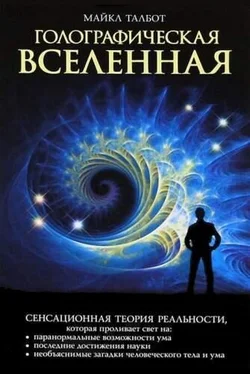



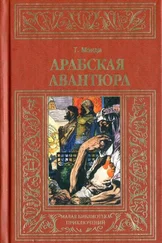
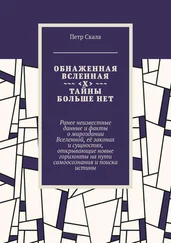
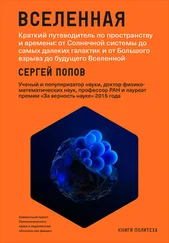
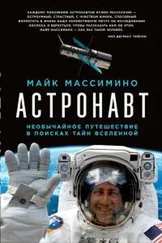
![Талбот Мэнди - Арабская авантюра [litres]](/books/432339/talbot-mendi-arabskaya-avantyura-litres-thumb.webp)


